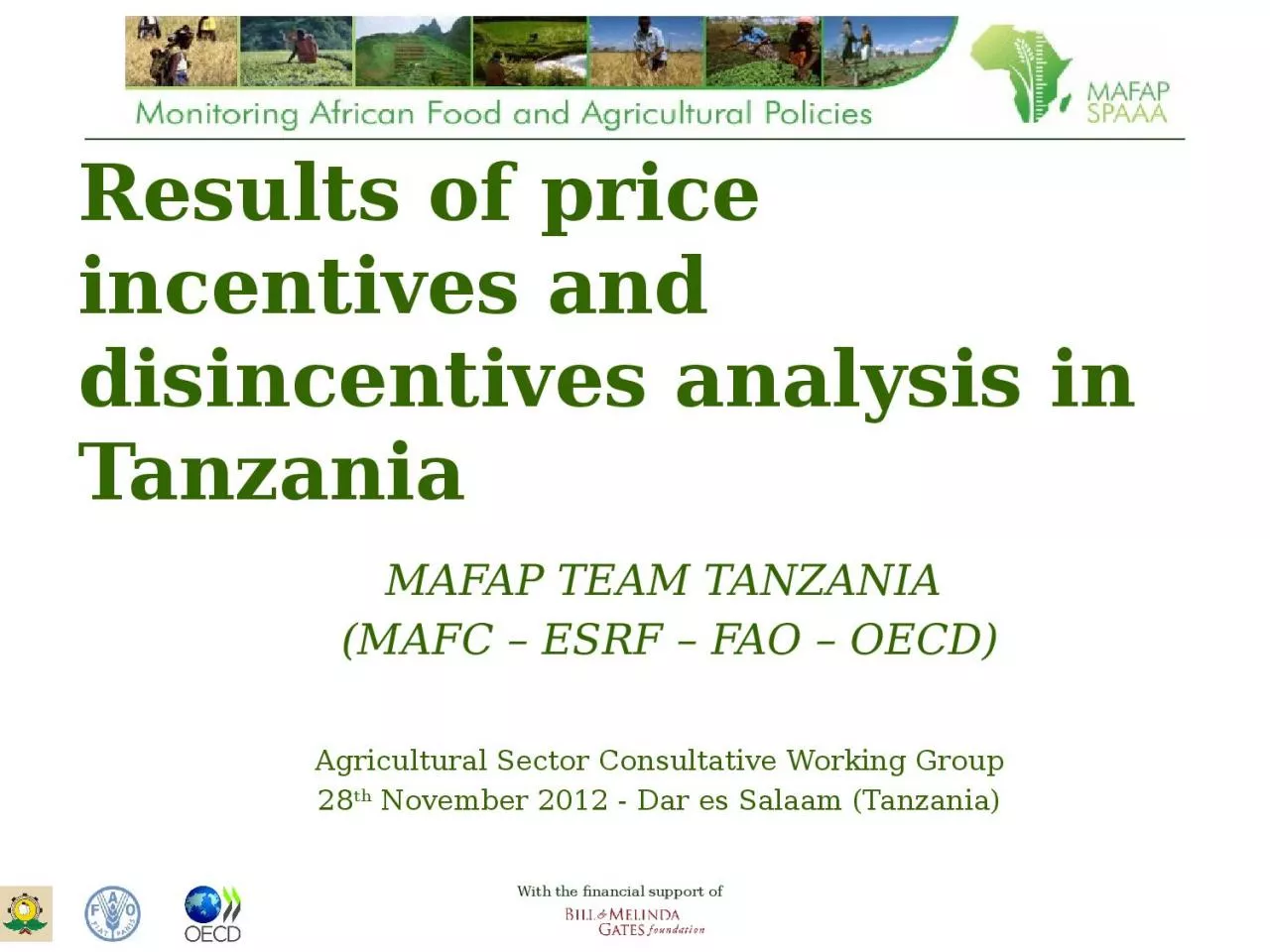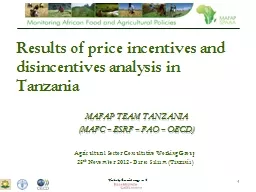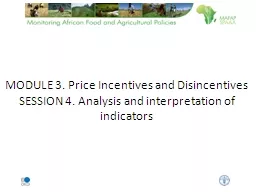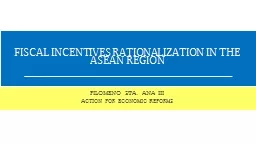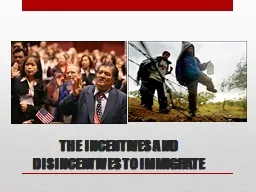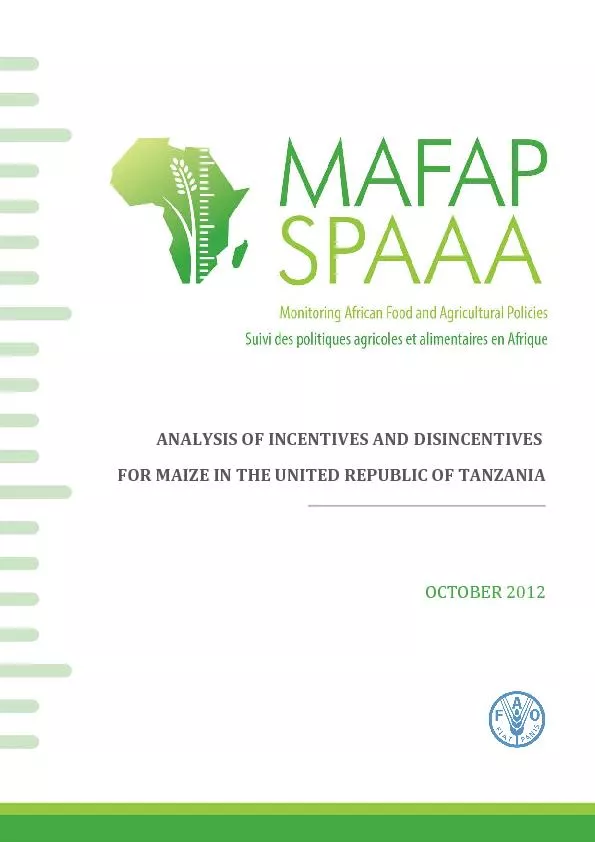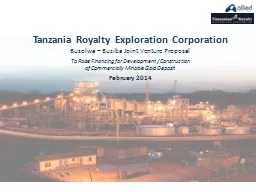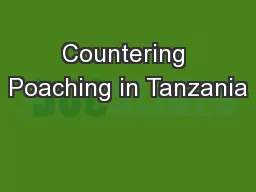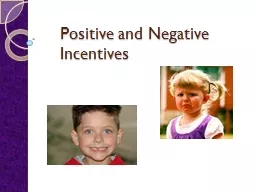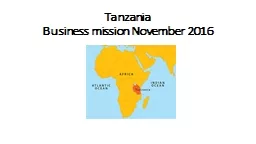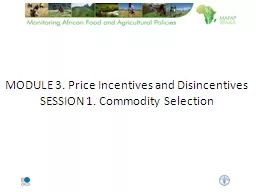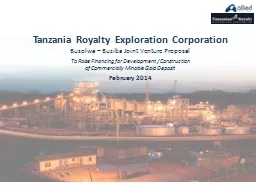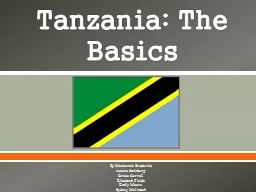PPT-1 Results of price incentives and disincentives analysis in Tanzania
Author : cadie | Published Date : 2023-10-31
Agricultural Sector Consultative Working Group 28 th November 2012 Dar es Salaam Tanzania MAFAP TEAM TANZANIA MAFC ESRF FAO OECD With the financial support
Presentation Embed Code
Download Presentation
Download Presentation The PPT/PDF document "1 Results of price incentives and disinc..." is the property of its rightful owner. Permission is granted to download and print the materials on this website for personal, non-commercial use only, and to display it on your personal computer provided you do not modify the materials and that you retain all copyright notices contained in the materials. By downloading content from our website, you accept the terms of this agreement.
1 Results of price incentives and disincentives analysis in Tanzania: Transcript
Download Rules Of Document
"1 Results of price incentives and disincentives analysis in Tanzania"The content belongs to its owner. You may download and print it for personal use, without modification, and keep all copyright notices. By downloading, you agree to these terms.
Related Documents

